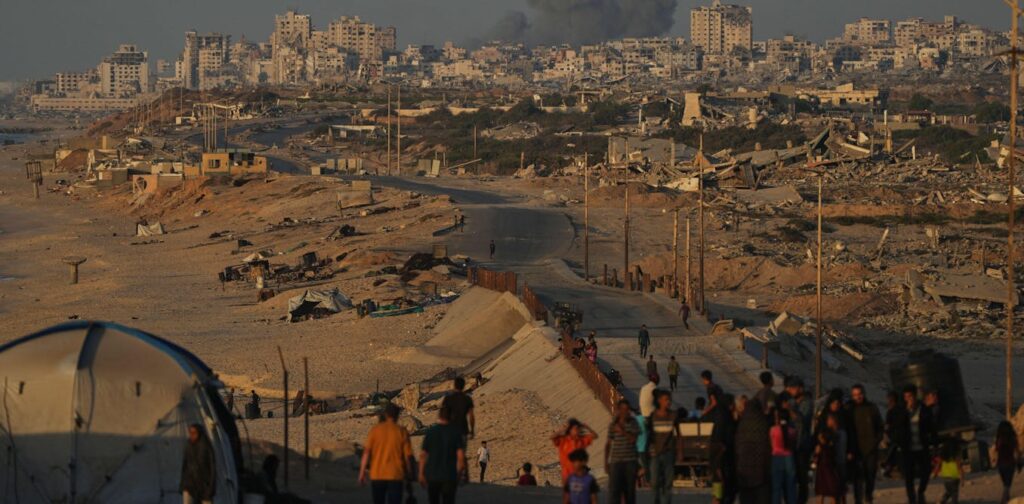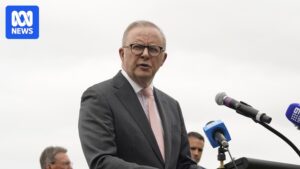
After two years of intense conflict resulting in the deaths of 68,000 Palestinians and over 1,200 Israelis, primarily civilians, a ceasefire agreement between Hamas and the Israeli government led by Prime Minister Benjamin Netanyahu is reportedly on the horizon. This development marks the first step in a 20-point peace plan spearheaded by U.S. President Donald Trump and supported by key Arab states.
The initial phase of the agreement will see Israel halting its military operations in Gaza, while Hamas has committed to releasing the remaining 20 Israeli hostages held in the region. This tentative truce has sparked discussions among international observers and experts, as stakeholders weigh the potential for lasting peace.
The Ceasefire Agreement: A Step Forward?
Jonathan Este, the international affairs editor at The Conversation, engaged with Scott Lucas, a Middle East expert from University College Dublin, to delve into the implications of this ceasefire. Lucas highlighted that while the agreement echoes the 60-day ceasefire of early 2025, there are notable differences.
Unlike previous agreements where Hamas released only some hostages, this time they are freeing all hostages and the bodies that can be recovered, in exchange for an undisclosed number of Palestinian detainees from Israeli prisons. This move potentially relinquishes Hamas’s leverage against Israeli military actions and the broader geopolitical dynamics involving Gaza.
Challenges and Sticking Points
The road to a comprehensive peace deal is fraught with challenges. Key sticking points include Israel’s demands for Hamas’s complete disarmament and the possible expulsion of some of its officials, which Hamas is likely to resist. Additionally, the composition of an international oversight board for Gaza remains vague, with President Trump positioning himself as the chair, yet lacking Palestinian representation.
The proposal for an International Stabilization Force to replace Israeli military presence in Gaza is still uncertain. Italian Foreign Minister Antonio Tajani has offered troops, but broader international support is unclear. Moreover, the governance plan for Gaza, involving Palestinian technocrats, is yet to be detailed, and the exclusion of Hamas from this process could complicate matters.
Regional Dynamics and Arab States’ Influence
While President Trump and his advisors, including Jared Kushner, have been credited with brokering the ceasefire, the role of Arab states has been crucial. Following an Israeli airstrike in Qatar, which targeted Hamas negotiators, Qatar and Egypt emerged as key mediators. Other Arab countries and Turkey have also played significant roles in encouraging Hamas to accept the ceasefire terms.
The involvement of these states will be essential in future negotiations, particularly if the U.S. reverts to a more aggressive stance supporting Israeli military actions and cutting aid to Gaza.
Implications for Palestinian Civilians
For the residents of Gaza, the immediate concern is survival and rebuilding. The ceasefire provides a respite from Israeli attacks, but the humanitarian situation remains dire. Essential aid must flow into the region, and efforts to rebuild homes and infrastructure must prioritize the needs of civilians over economic gains for international stakeholders.
“Recovery cannot just focus on the profits to be made – including for Trump, Kushner, and Gulf state business interests – from the ‘development’ of Trump’s ‘Riviera of the Middle East’.”
Long-term peace will require addressing the fundamental issues affecting Gaza’s civilians, ensuring their security and welfare through sustainable solutions.
Future Prospects for Peace
While the ceasefire is a positive step, the path to a lasting peace agreement remains complex. The prospect of a two-state solution, which could provide a framework for lasting peace, is currently not on the table for the Netanyahu government or the Trump administration, both of whom have shown a preference for expanding Israeli settlements in the West Bank.
As phase one of the ceasefire takes effect, the focus will shift to the next phases of the peace plan. The international community will be watching closely to see if these developments can lead to a more stable and peaceful future for both Israelis and Palestinians.
For now, the ceasefire offers a glimmer of hope for the hostages, their families, and the civilians of Gaza. However, achieving a comprehensive and enduring peace will require continued dialogue, compromise, and a commitment to addressing the underlying issues that have fueled this long-standing conflict.







